An OTF (out-the-front) knife is a precision tool built for speed, reliability, and performance. Whether you use your knife for everyday carry (EDC), tactical applications, or outdoor adventures, keeping it properly maintained is essential to ensure smooth deployment and long-lasting durability.
Unlike traditional folding knives, OTF knives have internal mechanisms that require occasional cleaning and lubrication to prevent dirt buildup and ensure flawless action. If neglected, your knife can start misfiring, jamming, or losing its sharpness over time.
In this guide, we’ll walk you through the best practices for cleaning, lubricating, and maintaining your OTF knife to keep it functioning like new.
Why Regular Maintenance Matters
A high-quality OTF knife, like those from RavenCrest Tactical, is built for durability, but regular maintenance helps prevent:
• Debris buildup inside the handle, which can slow down blade deployment.
• Blade dullness, reducing cutting efficiency.
• Internal wear and tear, affecting performance over time.
• Corrosion, especially if exposed to moisture or harsh environments.
Regular maintenance keeps your knife smooth, fast, and reliable, ensuring it’s always ready when you need it.
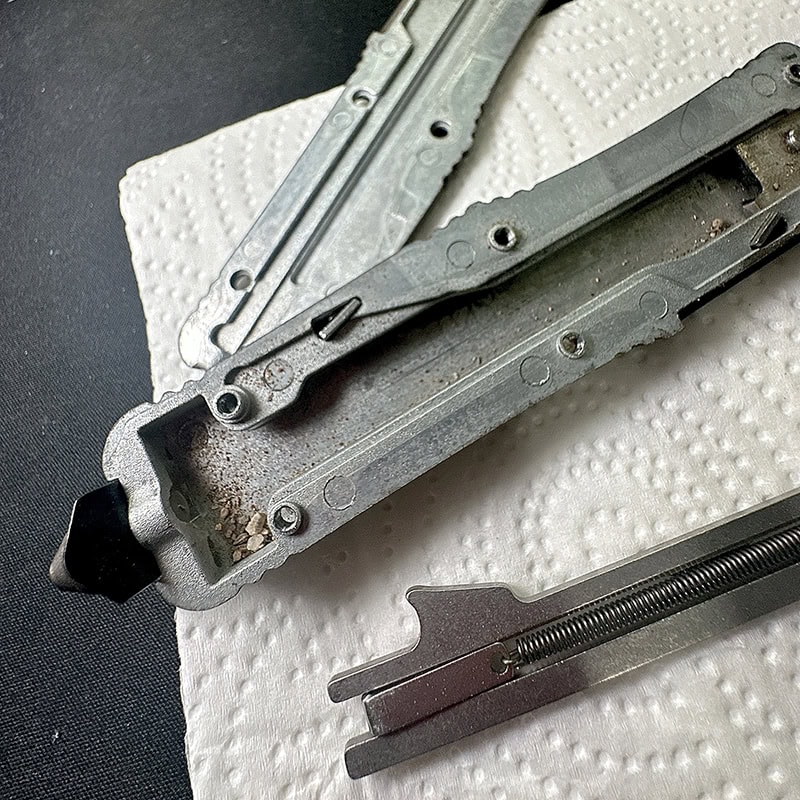
Step 1: Gather Your Cleaning Supplies
Before you begin, you’ll need the following supplies:
• Microfiber cloth (to wipe down the blade and handle)
• Compressed air (for removing dust and debris from inside the handle)
• Cotton swabs or a small brush (for reaching tight areas)
• Rubbing alcohol or a knife-specific cleaner (to remove grime)
• Lubricating oil (a small amount is needed to maintain smooth action)
• A T6 or T8 Torx driver (if you plan to fully disassemble the knife)
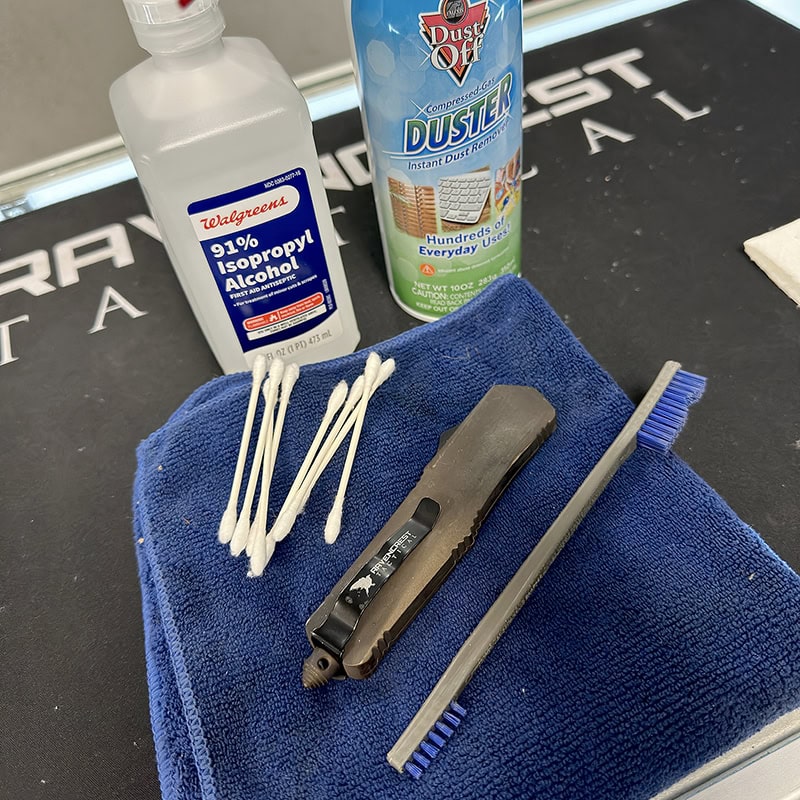
Step 2: Clean the Exterior
1. Wipe Down the Handle and Blade: Use a microfiber cloth to remove fingerprints, dirt, and any moisture from the exterior of the knife.
2. Remove Stubborn Grime: If there are stubborn marks or dried residue, apply a small amount of rubbing alcohol to a cloth and gently wipe down the surface.
3. Blow Out Dust and Debris: Use compressed air to blow out any dirt or lint trapped in the openings of the knife handle.
This step alone can improve deployment speed if dust has been slowing the mechanism.
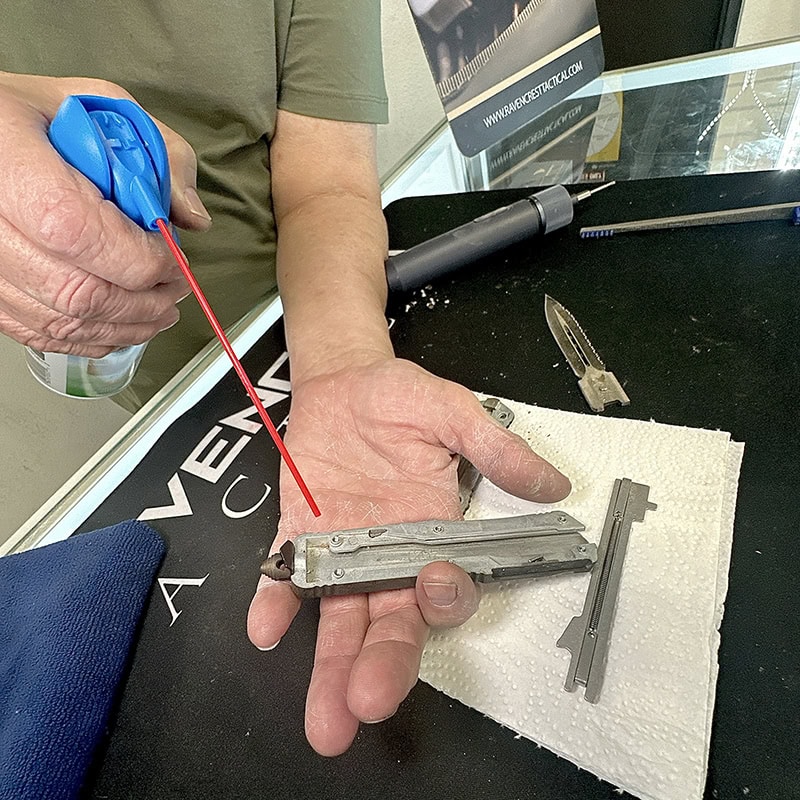
Step 3: Clean the Internal Mechanism
If your OTF knife has been exposed to dirt, sand, or pocket lint, deeper cleaning is necessary. While full disassembly is an option for experienced users, it’s not required for routine maintenance.
1. Partially Open the Blade: Slide the blade out carefully until it stops (without detaching it).
2. Use a Cotton Swab and Alcohol: Dip a cotton swab in rubbing alcohol and clean around the blade channel and internal parts as much as possible.
3. Use a Small Brush or Air to Remove Grit: If dirt is still present, a soft brush (like a clean toothbrush) or compressed air will help dislodge stubborn particles.
Pro Tip: If you notice excessive buildup inside, you may need to fully disassemble the knife for a deep clean. If you’re not comfortable doing this, RavenCrest Tactical offers a lifetime warranty and service for their knives, so you can send it in for professional maintenance.

Step 4: Lubricate the Mechanism
Applying the right amount of lubrication is crucial. Too much oil can attract dust, while too little can cause friction.
1. Choose a High-Quality Lubricant: Use a knife-specific lubricant (avoid WD-40 as it collects debris over time).
2. Apply a Small Drop: Place one to two drops of oil inside the blade channel and around the internal parts.
3. Deploy and Retract the Blade Several Times: This helps distribute the lubricant evenly throughout the mechanism.
4. Wipe Away Excess Oil: Use a microfiber cloth to remove any extra lubricant.
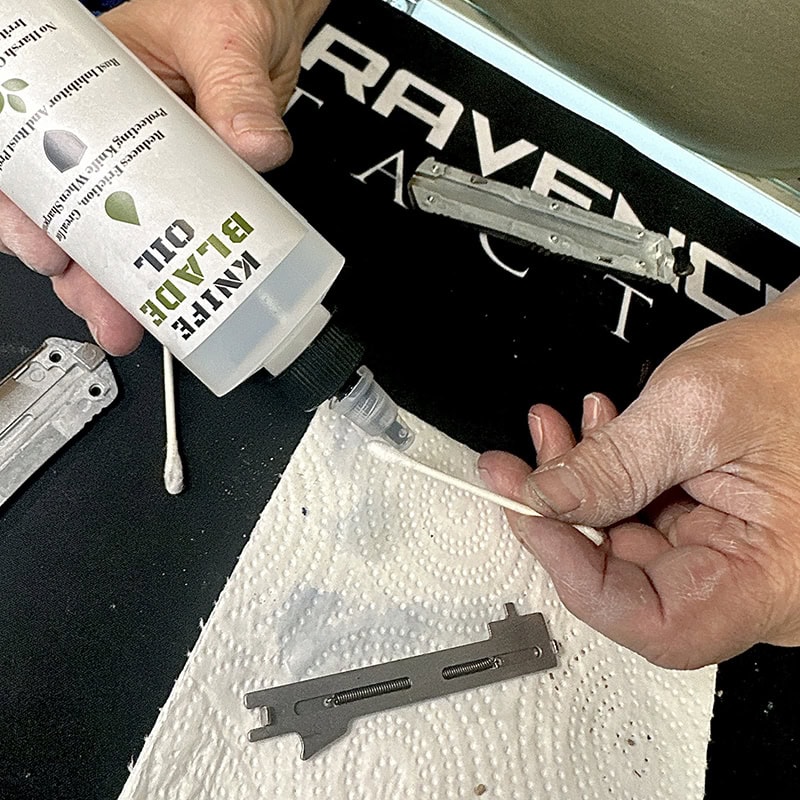
Step 5: Sharpen the Blade
A sharp blade makes your OTF knife safer and more effective. Dull blades require more force to cut, increasing the risk of slipping.
1. Use a Whetstone or Ceramic Rod: Glide the blade along the stone at a 15-20 degree angle, keeping consistent pressure.
2. Strop the Edge: Running the blade across a leather strop removes burrs and polishes the edge.
3. Check the Sharpness: Test it by slicing through paper or thin rope—if it struggles, continue sharpening.
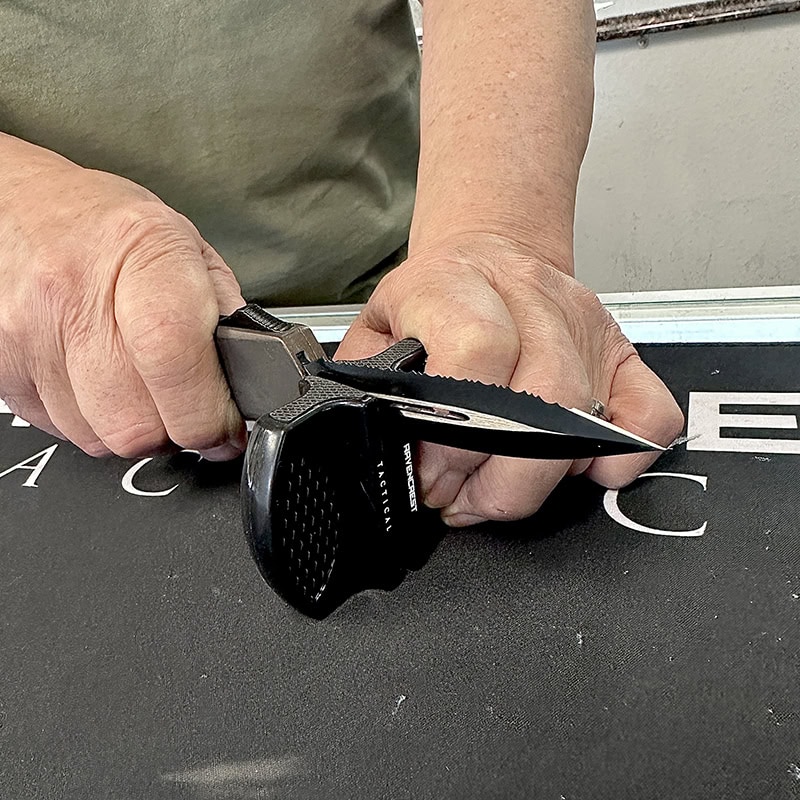
Step 6: Store Your OTF Knife Properly
Storage plays a big role in keeping your knife in top shape.
• Keep it Dry: Moisture is the enemy of any knife. Store it in a dry environment and avoid prolonged exposure to humidity.
• Use a Knife Pouch or Sheath: This protects the blade and prevents dust buildup.
• Don’t Store It Fully Extended: Always retract the blade when storing to prevent tension on the internal springs.
Photo Idea: An OTF knife stored neatly in a high-quality carrying pouch.
Common OTF Knife Problems & How to Fix Them
Problem: The blade doesn’t deploy fully or feels sluggish.
Solution: Blow out dust with compressed air, apply a drop of lubricant, and test the action.
Problem: The blade gets stuck mid-deployment.
Solution: Check for debris inside the handle. If needed, clean the internal components and relubricate.
Problem: The knife feels loose or has blade play.
Solution: Tighten any loose screws using a T6 or T8 Torx driver.
Final Thoughts: Keeping Your OTF Knife in Peak Condition
A well-maintained OTF knife is not only faster and more reliable but also safer and more enjoyable to use. By following these simple steps, you can keep your knife deploying smoothly, cutting sharply, and lasting a lifetime.
If you ever need a professional tune-up, RavenCrest Tactical offers lifetime servicing on all their OTF knives. Whether you need a quick clean or a full restoration, their expert team ensures your knife stays in top condition.
For high-quality OTF knives built to last, check out RavenCrest Tactical’s collection today and carry with confidence.
